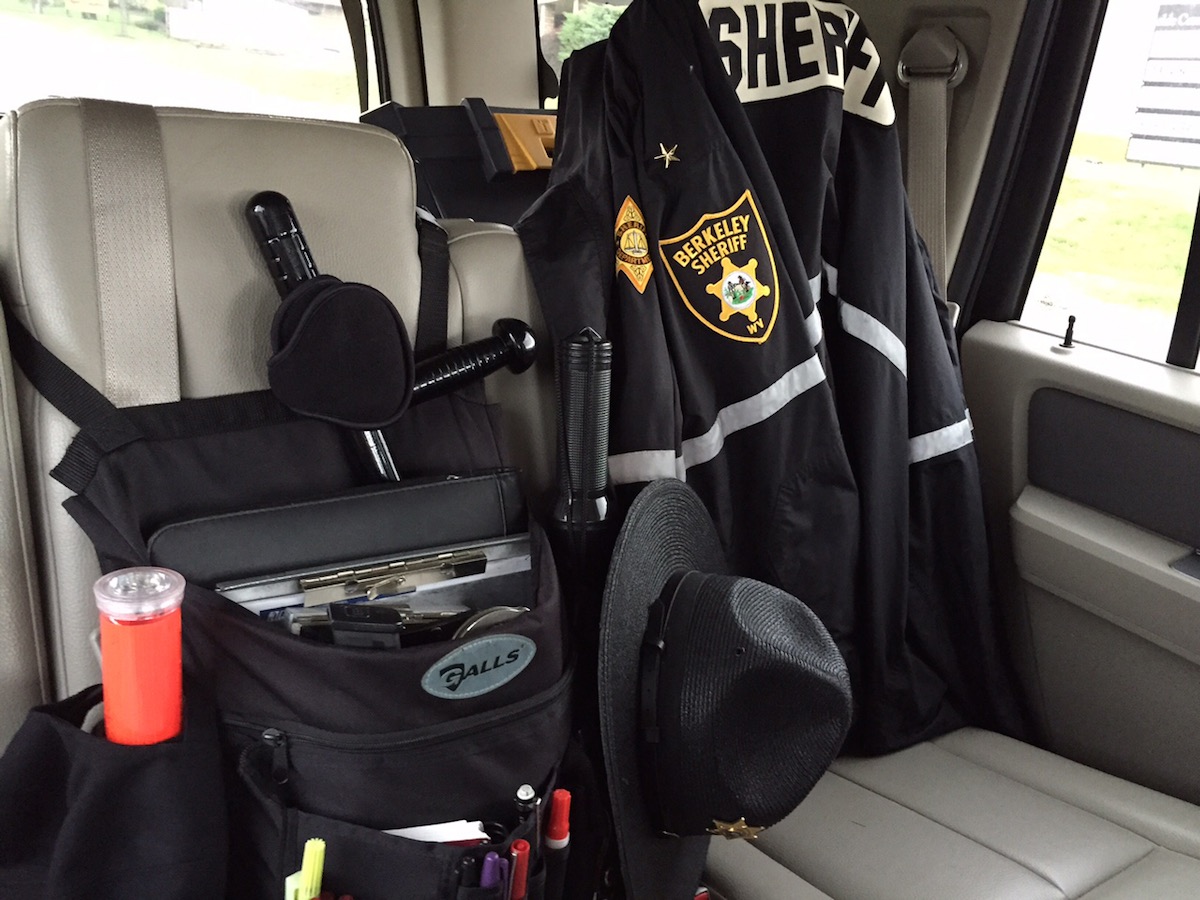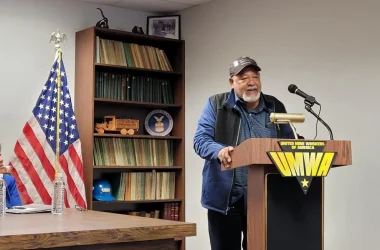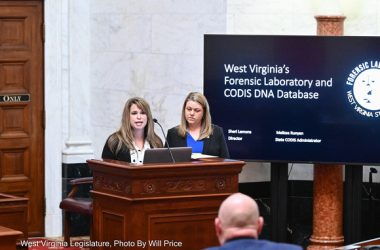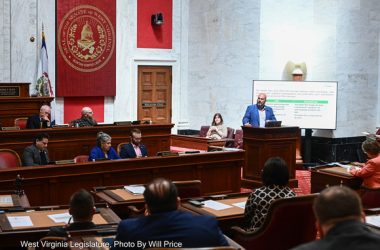The Needle and the Damage Done: West Virginia’s Heroin Epidemic
By Liz McCormick
West Virginia Public Broadcasting
Editor’s Note: This is one in a series of stories by West Virginia Public Broadcasting, called “The Needle and the Damage Done: West Virginia’s Heroin Epidemic.” You can find the entire series, as well as interactive graphics and sound files at http://wvpublic.org/heroin.
CHARLESTON, W.Va. — The Eastern Panhandle’s proximity to some major cities, such as Baltimore, Philadelphia and Washington D.C., is making the job of keeping drugs out of West Virginia very difficult.
Berkley County, for example, has the second-highest rate of heroin overdose deaths in the state, according to one U.S. attorney.
Kenny Lemaster is the sheriff of Berkeley County. Parked in a small lot across the street from a bar on the outskirts of Martinsburg, he sees three young men wearing hoodies and jeans in the bar’s parking lot.

They’re standing in a circle beside an old, rusting car. The sheriff pulls out his binoculars to get a closer look at what the men are doing. This small group could be totally innocent, but Sheriff Lemaster is suspicious. He says this scene could easily turn into an arrest for dealing heroin.
“It’s kind of blustery, cold day for people just to be standing out leaning against a car talking. So we’re just seeing what they do,” he says.
Lemaster didn’t end up making any arrests, but he said he doesn’t take any chances when it comes to certain areas in Martinsburg.

Heroin Trafficking on the Rise
Lemaster said heroin trafficking in Berkeley County, specifically in areas of Martinsburg, has risen significantly in the past 10 years. As more businesses and families moved to the ever-growing region, so did heroin.
“I think it’s everywhere. It’s just more prevalent here, because of our location as far as D.C. and Baltimore, I mean I think Washington County, Frederick County, they have about the same thing with the same problems, or similar problems,” Lemaster said. “It’s just that maybe those aren’t quite as bad. You know per capita, we probably have less police officers that are working on the issues compared to maybe those jurisdictions.”
To combat the growing heroin problem, Lemaster’s department has teamed with the State Police, Martinsburg Police Department and others to form the Eastern Panhandle drug task force.
The sheriff said the size of the task force is a problem, though. Just 12 officers in the Eastern Panhandle have been given the special assignment.
“Here in Berkeley County, we’ve only got a limited number of people that can be assigned to the task force, simply because those are just special assignments, whereas we’ve got to meet the needs of the demand of the public where all the other calls to service that we have, whether it’s an accident, or it’s a domestic, or it’s even serving court papers or warrants,” Lemaster said.
U.S. Prosecuting Attorney William Ihlenfeld, from the Northern District of West Virginia, said Berkeley County is second in the state for heroin overdose deaths, right after Cabell County.
Baltimore Supply Line
Ihlenfeld and Sheriff Lemaster both said the heroin coming into Berkley County almost exclusively comes from Baltimore, which Ihlenfeld believes could be the heroin capitol of the country.
“We have people from West Virginia who drive to Baltimore every single day, or to the outskirts of Baltimore every single day,” Ihlenfeld said. “And the reason why is because it’s cheaper to buy it in Baltimore than it is to buy it in West Virginia. And so the user wants to go to a bigger city like Baltimore or Pittsburgh. They’re only gonna drive so far, but they will drive long distances, they will drive hours in the car, and they’ll travel to a bigger city cause they can get more for their money.”
Because it’s close to Baltimore, Philadelphia and D.C., Ihlenfeld said Berkeley County is perfectly positioned for both addicts looking for cheap drugs and dealers looking for new customers.
“We could do that all day long. We could stop cars all day long traveling from Weirton, West Virginia over to Steubenville. There’s a constant flow of traffic. Or from Martinsburg to Baltimore,” he said. “We could stop cars all day long and we would find either heroin or remnants of heroin use.”
Distribution
But the same can be said for many areas of the state. Huntington, in Cabell County, is dealing with the same issues.
“We have become a distribution center here. You know, as you follow heroin if it comes Mexico to Phoenix to Chicago, Detroit, Toledo, Columbus, Huntington,” said Jim Johnson, director of the Huntington Mayor’s Office of Drug Control Policy. “We’ve become a distribution center and that’s why we say if we move drug dealers off of First Street in Huntington and they move to First Street in Kenova or Barboursville, we’ve still got the same problem.”
Johnson said Huntington has made great strides during the past few years in combating the flow of drugs into the area by working, much like they do in Berkeley County, with other law enforcement agencies as drug task forces.
High drug traffic comes with being a transient city, Martinsburg Mayor George Karos said. He believes movement through the county helps boost the local economy, but he said it helps boost the illegal drug activity as well.
“Back in the late ’70s or early ’80s, we had a fantastic drug problem here. Federal helicopters came in early in the morning, federal prosecutors were here, local DEA teams were here, the drug task force were here,” Karos said. “They made several arrests early in the morning, took them to federal court, they were in prison and it cleared up for a while. And I’m sure it’s going to happen with the heroin problem. It’ll get cleared up, but it’ll be a lapse, there’ll be a period there everything will be quiet, but it’ll come back again. It seems like it just moves from one area to another area or from one community to another community.”
Opioid Antagonist Act
Karos said he believes the Opioid Antagonist Act approved by West Virginia lawmakers this legislative session is the answer to many of Martinsburg’s drug trafficking issues. The bill gives not just emergency responders, but also friends and family members of addicts access to a drug called Naloxone. Administered either through a shot or a nasal spray, the drug reverses the symptoms of an overdose, saving lives.
But Sheriff Lemaster is skeptical that access to the medication will make a difference to the amount of drugs being brought across the state line.
“It’s just another way to say it’s okay to use drugs, ’cause we’re going to treat you if you do. We’re going to help you if you are using drugs,” he said. “It’s kind of like giving the nod saying, ‘Yeah it’s alright, we’ll take care of you.’ I believe in saving people’s lives, but at what expense do you keep giving in and allowing people to break the law to use such things?”
Still, Mayor Karos is optimistic the drug problem in Berkeley County will clear up. After all, cities like Huntington are starting to make some progress. But he also said that the drugs will never fully go away — they will only be controlled.




